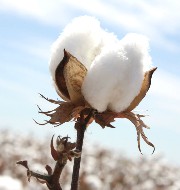GEAC planning to recommend ‘environmental release’ of Bayer’s GM Cotton
Genetic Engineering Appraisal Committee (GEAC) is currently planning to recommend environmental release of a genetically modified (GM) herbicide tolerant cotton of German multinational company Bayer AG. It had earlier approved the environmental clearance of Delhi University’s transgenic hybrid mustard DMH-11 along with its parental lines.
What is BG-II RRF?
- Bollgard II Roundup Ready Flex (BG-II RRF) is a transgenic cotton having three alien genes.
- Two of the alien genes – cry1Ac and cry2Ab – were isolated from a soil bacterium Bacillus thuringiensis. These genes have proteins that are harmful for American bollworm, spotted bollworm and tobacco caterpillar insect pests.
- The third gene – cp4-epsps – was obtained from another soil bacterium Agrobacterium tumafaciens. Its inclusion makes the cotton crop “tolerant” to the harmful herbicide glyphosate, which does not distinguish between the crops and weeds.
- The BG-II RRF cotton was developed by the American company Monsanto, which was acquired by Bayer in 2018.
- It underwent biosafety research and field trials in 2012-13. The results of the trials were submitted to the GEAC in 2013. However, the American company withdrew the application seeking environmental clearance for the crop due to regulatory uncertainties and lack of government decisions.
- Bayer had resubmitted the permission for environmental clearance to GEAC early this year.
What are genetically modified crops?
Genetically modified crops are crops that had their DNAs altered to include certain desirable traits. The widely used GM soyabean, maize, cotton and canola are tolerant to herbicides and resistant to pest attacks. Other common traits included in genetically modified crops are resistance to virus, resistance to drought and improved fruit and tuber quality.
How are genetically modified crops regulated in India?
Genetically modified crops pose threat to animal health, humans and biodiversity during the process of development, cultivation and transboundary movement. Hence, their production, cultivation and movement are highly regulated. Rules and Acts that ensure their regulation are Environmental Protection Act, 1986, Biological Diversity Act, 2002, Plant Quarantine Order, 2003, GM Policy under Foreign Trade Policy, Food Safety and Standards Act, 2006 and Drugs and Cosmetics Rule (8th Amendment), 1988.
Month: Current Affairs - October, 2021
Category: India Nation & States Current Affairs


